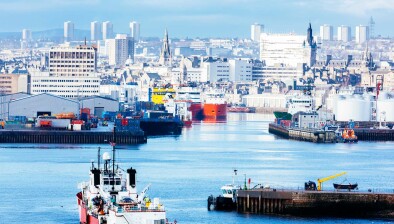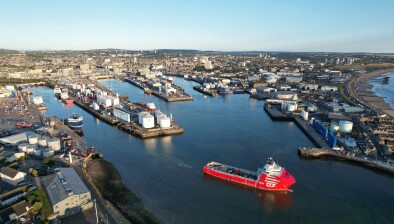Knight Frank: Covid-19 pandemic prompts investor shift to industrial and retail property

Alasdair Steele
The industrial sector’s share of investment in Scottish commercial property has nearly doubled since the beginning of the Covid-19 pandemic, according to new research from Knight Frank.
The independent commercial property consultancy’s analysis of Real Capital Analytics (RCA) data found that since 2020, industrial property accounted for 21% of investment volumes into commercial property in Scotland, compared to 11% in the half-decade prior. Retail and seniors housing and care also saw increases – up from 27% to 31% and 1% to 4%, respectively.
While the hotel and office sectors saw considerable falls, as lockdowns disrupted tourism and working from home became more popular, 2024’s figures suggested both are on the path to recovery. Investment in hotels more than doubled to £510 million and offices saw a 40% rise to £517m, compared to the previous 12 months.
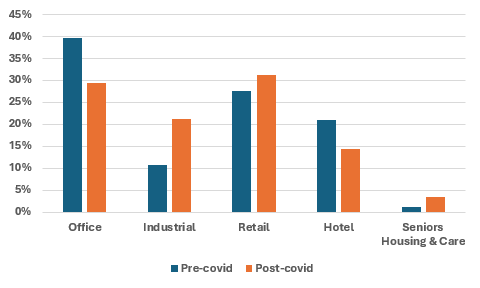
Figure 1: Share of total investment by asset type during 2015-2019 and 2020-2025
Average annual investment volumes fell to £1.9 billion following the pandemic from £2.6bn. However, when much-disrupted 2020 is excluded, the four-year post-pandemic average rises to £2.2bn.
The second weakest year in terms of investment volumes was 2023 at £1.6bn, as interest rates rising to their highest point since the financial crisis took their toll on deal activity.
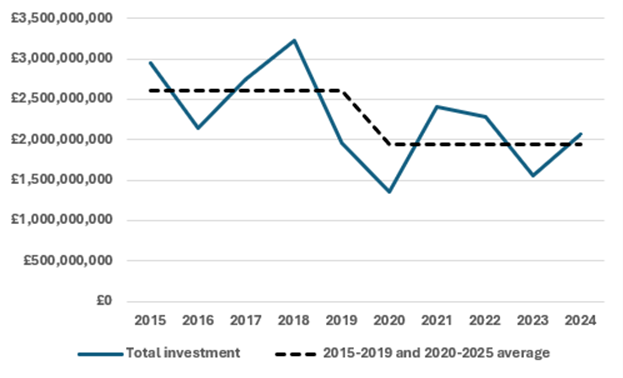
Figure 2: Average annual investment volumes during 2015-2019 and 2020-2025
There have also been some evident changes in the balance of buyers across the Scottish market. International investors saw their share of volumes fall from 55% to 47% – although, this can partially be put down to the restrictions on travel and general disruption that affected 2020 to 2022. Institutional investors also saw their share fall, from 28% pre-pandemic to 20% in its aftermath.
Private investors’ share of deal activity nearly doubled from 12% to 21%. They particularly filled the gap left by other groups in 2023 when interest rates reached their peak, as they are often cash buyers. Real estate investment trusts (REITs) and listed property companies also saw their share of investment volumes increase, as they were more actively involved in deals post-pandemic.
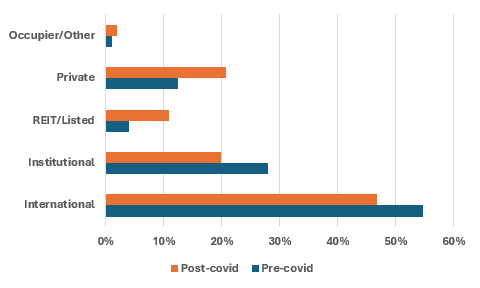
Figure 3: Share of total investment volumes by buyer type during 2015-2019 and 2020-2025
Alasdair Steele, head of Scotland commercial at Knight Frank, said: “There have been some noticeable changes in the Scottish commercial property market following the Covid-19 pandemic – some of which have stayed consistent since it first happened, while others look to be evolving over time.
“The industrial sector was the clear winner during and immediately after the pandemic period, as the occupiers in these types of properties were largely able to continue with their operations and the likes of logistics and distribution centres became even more important to the functioning of the economy. More interest in the sector led to keener pricing and 2023 saw the lowest level of investment since 2019 – although, there was a reasonable rebound last year.
“There is little surprise in seeing a decline in the share of investment received by offices and hotels. Working from home has become much more normalised, but the occupier markets have remained resilient throughout and there are signs that more people are spending a larger proportion of their time back in the office. As for hotels, the post-pandemic travel boom continues to boost the market and, after a few quieter years, we saw investment pick up in a significant way during 2024 – especially in Edinburgh.
“All things being equal, five years on from the beginning of the pandemic and the economic impact it had in terms of inflation and interest rates, there are grounds for cautious optimism. There is a broader set of buyers interested in Scottish commercial property, strong occupational markets across a variety of sectors, and interest rates on a downward trajectory – all of which should be supportive for deals in the year ahead and potentially beyond.”
















